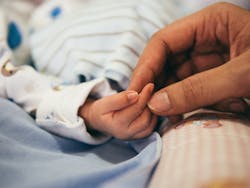New report reveals stark inequalities in access to HIV prevention and treatment services for children
In the final report from the Start Free, Stay Free, AIDS Free initiative, UNAIDS and partners warn that progress towards ending AIDS among children, adolescents and young women has stalled and none of the targets for 2020 were met.
The report shows that the total number of children on treatment declined for the first time, despite the fact that nearly 800,000 children living with HIV are not currently on treatment. It also shows that opportunities to identify infants and young children living with HIV early are being missed—more than one third of children born to mothers living with HIV were not tested. If untreated, around 50% of children living with HIV die before they reach their second birthday.
Start Free, Stay Free, AIDS Free is a five-year framework that began in 2015, following on from the hugely successful Global Plan towards the elimination of new HIV infections among children by 2015 and keeping their mothers alive. It called for a super Fast-Track approach to ensure that every child has an HIV-free beginning, that they stay HIV-free through adolescence and that every child and adolescent living with HIV has access to antiretroviral therapy. The approach intensified focus on 23 countries, 21 of which were in Africa, that accounted for 83% of the global number of pregnant women living with HIV, 80% of children living with HIV and 78% of young women aged 15–24 years newly infected with HIV.
Although the 2020 targets were missed, the 21 focus countries in Africa made better progress than the non-focus countries. However, there were major disparities between countries, and these countries still bear the highest burden of disease: 11 countries account for nearly 70% of the “missing children”—those living with HIV but not on treatment. There was a 24% decline in new HIV infections among children from 2015 to 2020 in focus countries versus a 20% decline globally. Focus countries also achieved 89% treatment coverage for pregnant women living with HIV, compared to 85% globally, but still short of the target of 95%, and there were huge differences between countries. For example, Botswana achieved 100% treatment coverage, yet the Democratic Republic of the Congo only reached 39%.
“While we are deeply distressed by the global pediatric HIV shortfalls, we are also encouraged by the fact that we largely have the tools we need to change this,” said Angeli Achrekar, Acting United States Global AIDS Coordinator. “So, let this report be a call to action to challenge complacency and to work tirelessly to close the gap.”
The report outlines three actions necessary to end new HIV infections among children in the focus countries. First, reach pregnant women with testing and treatment as early as possible—66 000 new HIV infections occurred among children because their mothers did not receive treatment at all during pregnancy or breastfeeding. Second, ensure the continuity of treatment and viral suppression during pregnancy, breastfeeding and for life—38 000 children became newly infected with HIV because their mothers were not continued in care during pregnancy and breastfeeding. Third, prevent new HIV infections among women who are pregnant and breastfeeding—35 000 new infections among children occurred because a woman became newly infected with HIV during pregnancy or breastfeeding.
